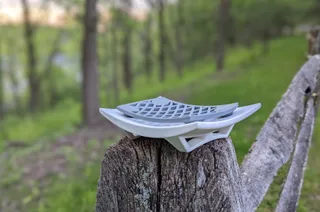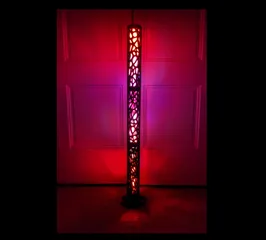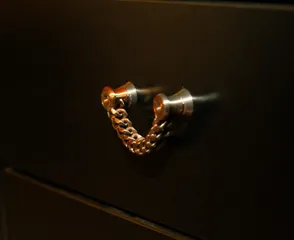Modular Can Dispensers - 5 Sizes
Description
PDFA beverage can dispenser made of strong stackable modules that can hold any amount of a beverage you would like to have on hand. Either in your fridge or elsewhere. I wanted it for my redbull addiction, but I used parametric design so I could easily make versions for other popular can sizes and have uploaded the models accommodating 5 of what I believe are the most popular sizes.
Sizes
There are 5 different versions of each model to fit 5 common beverage can sizes.
| Size Name | Can Diameter (approx.) | Can Height (approx.) | Common Use |
| 7.4oz | 58mm | 104mm | Mini sodas |
| RB 8.4oz | 54mm | 136mm | Classic 8.4oz RedBull can |
| RB 12oz | 58mm | 158mm | Larger 12oz RedBull cans |
| 12oz | 66mm | 123mm | Standard soda and beer cans |
| 16oz | 66mm | 158mm | Monster, Rockstar, and 16oz RedBull |
Notes on sizes:
Dispensers for cans of the same diameter should end up the same overall length, and height per layer. Same height cans will make dispensers of the same width.
In order to keep the models small enough to fit in an Ender-3 build volume the dispensers for 7.4oz, RB 8.4oz, and RB12oz hold 4 cans per-layer plus 1.5-2 cans on the tongue. Dispensers for 12oz, and 16oz hold 3.5 cans per-layer plus 1.5 cans on the tongue.
Printing and Assembly
- Line
- I decided to slice mine with a 0.6mm line width even though I was printing with a 0.4 nozzle. so I could get a 1.2mm thick wall with only 2 print lines which saves some time when you want a thicker wall and reduces the number of added “top” and “ bottom” layers printed during the strut overhangs.
- Orientation
- The parts were designed to be printed in a standing orientation to minimize required supports and create a smoothest rolling surface for the cans.


It's possible to print the ramp parts laying down, but because of the shallow angle of the ramp the “stair-step effect” shows pretty strongly.
Pictured: previous prototype printed laying down (right), vs. current model printed standing up. (left)

When printed laying down it's possible a can can come to rest on just the right spot where it won't necessarily start rolling when the can in front of it is removed. This doesn't happen frequently, but is a consideration for print orientation.

Either way if a jam of any nature were to happen it would be effortless to clear.
- Infill & support
- Infill is only really needed to make a truss structure with the can rolling surface. It can be omitted from the vertical wall areas so save time and travels moves.

The “Turnover End” and “ Present End” parts do require a small amount of support but it should be easily removable and is a non visible surface when stacked




Use a few drops of the glue of your choice in the holes of the ramp side.
With the holes holding the glue insert the posts from the end part into the ramps holes.

I then turned them over so the glue could flow into the spaces between the posts and the walls of the hole without the glue dripping out.

Making my own dispenser, I didn't glue the “tongue” part to the "open end" because the weight of the dispenser already keeps it in place, and incase there is a chance the glue wouldn't hold if I picked it up with the weight of cans on it. You can make your own choice regarding glueing on the tongue.
The same goes for gluing the various levels to each other into a solid tower. You could, but you don't have to, and I didn't. I wanted to be able to take the levels apart for loading.  There is also a lid part so you can place things on top of the dispenser, but it still leaves space open to add cans into the dispenser.
There is also a lid part so you can place things on top of the dispenser, but it still leaves space open to add cans into the dispenser.
Tags
Model origin
The author marked this model as their own original creation.




